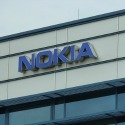
Nokia has hired 350 employees for research and development in Finland this year as it tries to fix a 5G chip problem that could derail its mobile business, the company confirmed in an email to Light Reading.
Following reports in the Finnish press, the equipment vendor said it had been recruiting mainly for system-on-a-chip development but declined to provide staff numbers for its overall R&D function.
The update comes after Nokia's share price fell 27% last week when the company revealed that its use of certain components in 5G products had squeezed third-quarter profits, with the gross margin at its networks business falling five percentage points compared with the year-earlier period.
CEO Rajeev Suri had hoped the use of field programmable gate arrays (FGPAs) -- chips that can be reconfigured after the design stage -- would provide flexibility and give Nokia a 5G time-to-market advantage over competitors Ericsson and Huawei.
But FGPAs are more expensive than alternative application-specific integrated circuits (ASICs), meaning Nokia's 5G products are less profitable than rival gear. Suri also said Nokia had also been let down by one of its FGPA component suppliers, which one analyst on the earnings call appeared to identify as Intel.
Its problems have forced Nokia to lower its outlook and pause dividends while it pumps extra funding into 5G R&D.
Nokia cut overall R&D expenses by 6% last year, to about €4.62 billion ($5.14 billion), and has spent €3.34 billion ($3.71 billion) in the first nine months of 2019, about 3% less than in the year-earlier period.
"It's fair to say that 5G happened quicker than we and others thought," said Kristian Pullola, Nokia's chief financial officer, when asked during an interview with Light Reading last week if the firm was guilty of underinvesting in 5G. "We have had pressure in R&D to get to the situation we are in now and that happened in parallel with product migration work related to the Alcatel-Lucent merger."
Nokia bought rival Alcatel-Lucent in a €15.6 billion ($17.3 billion, at today's exchange rate) deal at the start of 2016 and said its decision to use FPGAs was prompted by that move and the integration challenges that came with it.
Want to know more about 5G? Check out our dedicated 5G content channel here on
Light Reading.
While it has not indicated exactly how much it plans to spend on R&D next year, it has been forced to reduce cost-saving targets by €200 million ($222 million). Nokia was previously hoping to cut annual costs by €700 million ($778 million) in 2020, compared with 2018, but is now aiming for a €500 million ($556 million) reduction.
Unlike rival Ericsson, Nokia does not disclose details of headcount in its quarterly earnings statements, but its annual reports indicate that average staff numbers increased from 101,731 employees in 2017 to 103,083 last year.
Ericsson finished 2018 with 95,359 employees after shedding 5,376 that year. Its headcount has fallen by more than 15,500 employees since current CEO Börje Ekholm took charge of the business at the start of 2017.
ZTE, a Chinese 5G competitor, appears to have made even sharper cuts in recent years, with overall headcount falling from 84,622 employees in 2015 to 68,240 last year.
Nokia's share price was up 2% in Helsinki today at the time of writing, to around €3.28 ($3.65). It is currently down a third compared with its level this time last year.
Related posts:
— Iain Morris, International Editor, Light Reading
About the Author(s)
You May Also Like












